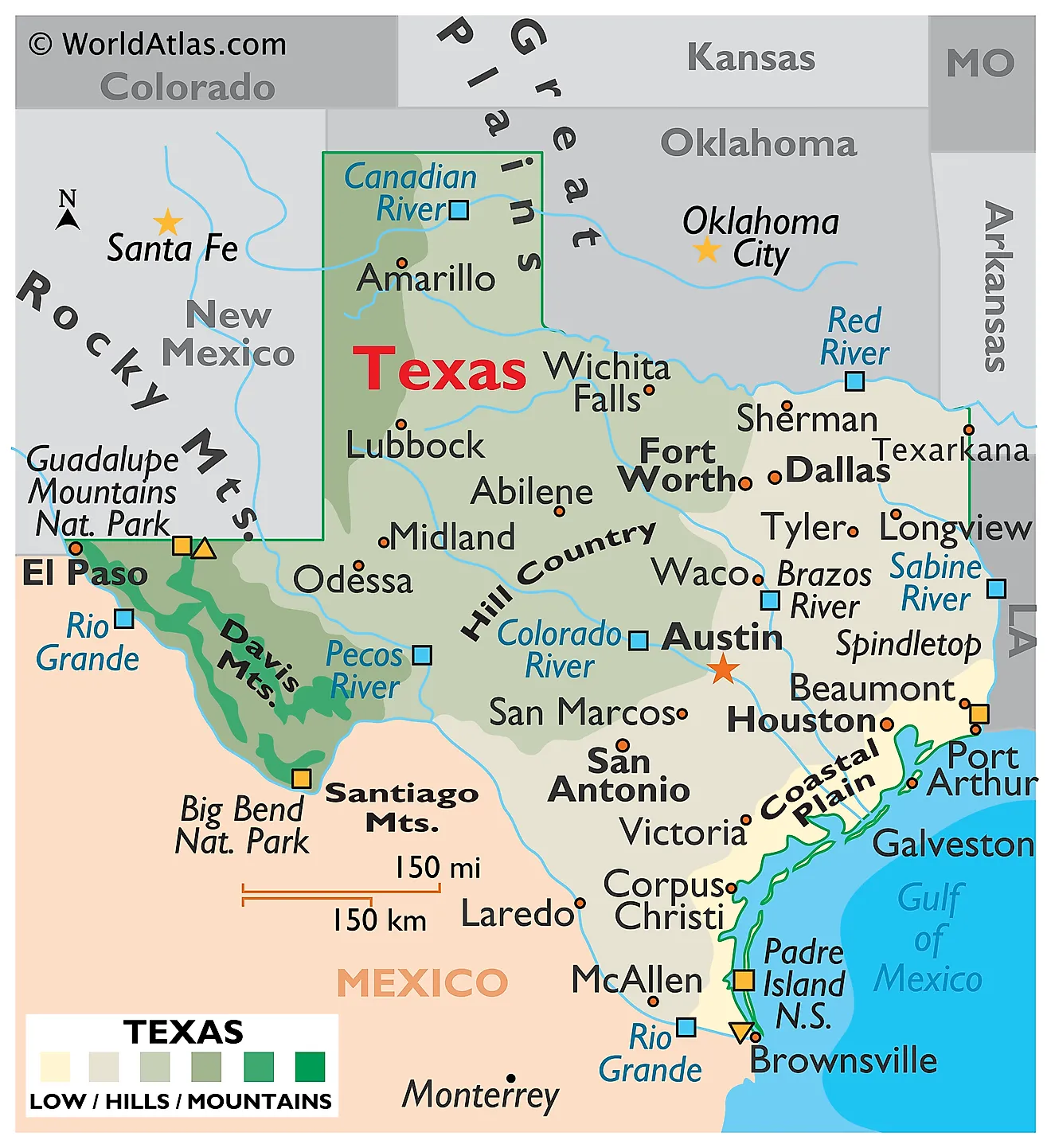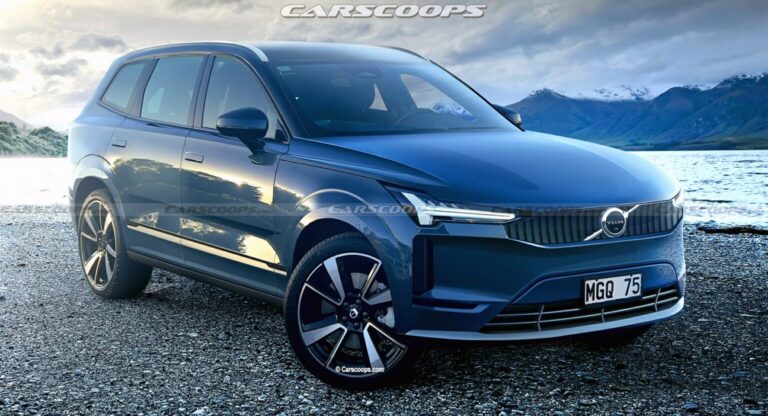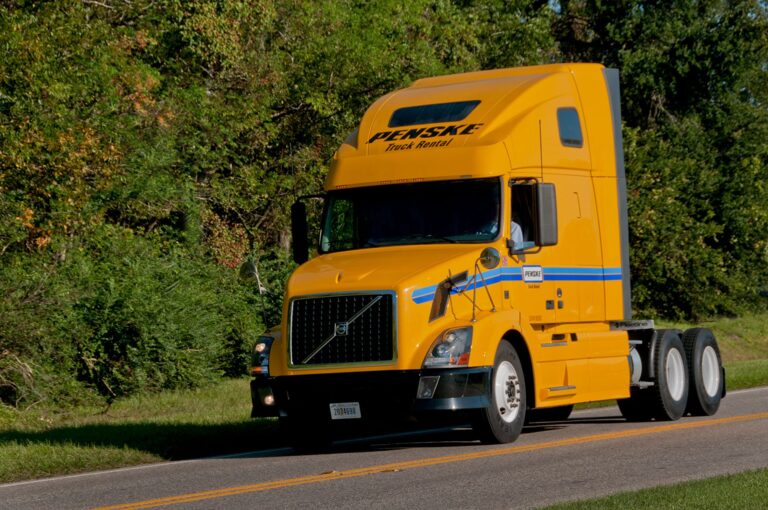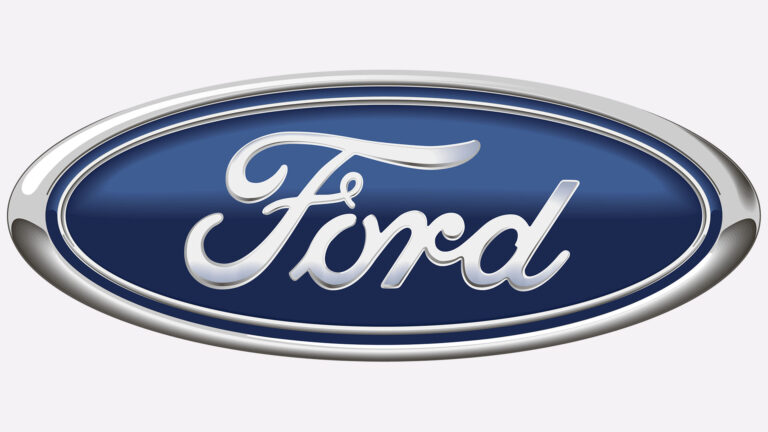Texas Square Body Trucks For Sale: Your Ultimate Buyer’s Guide
Texas Square Body Trucks For Sale: Your Ultimate Buyer’s Guide cars.truckstrend.com
Introduction: The Enduring Appeal of the Texas Square Body
The roar of a classic V8, the iconic lines, and the unmistakable silhouette – for automotive enthusiasts and truck lovers alike, the "Square Body" truck holds a special place. Referring primarily to the Chevrolet and GMC C/K series pickups produced from 1973 to 1987 (with SUVs like the Blazer and Suburban extending to 1991), these trucks represent a golden era of American automotive design: rugged, dependable, and aesthetically timeless. But why is "Texas Square Body Trucks For Sale" a phrase that consistently piques interest?
Texas Square Body Trucks For Sale: Your Ultimate Buyer’s Guide
Texas, with its vast landscapes, rich truck culture, and predominantly dry climate, has become a veritable mecca for finding these vintage workhorses in remarkably preserved condition. Far from the corrosive effects of road salt and incessant humidity found in other regions, a Texas Square Body often boasts a solid foundation, making it an incredibly desirable commodity for restoration, customization, or simply as a reliable classic daily driver. This comprehensive guide will delve into everything you need to know about navigating the market for Texas Square Body trucks for sale, offering insights, practical advice, and actionable steps to help you find your dream classic.
Why Texas? The Mecca for Square Bodies
The reputation of Texas as the prime hunting ground for Square Body trucks is no accident. Several key factors contribute to this unique phenomenon:
- Climate Advantage: The most significant benefit of buying a truck from Texas is the climate. Much of the state experiences low humidity and minimal snowfall, meaning road salt usage is rare to non-existent. This dramatically reduces the likelihood of rust, the arch-nemesis of vintage vehicles. While no truck is entirely immune, Texas trucks often feature remarkably solid frames, cab corners, rocker panels, and bed floors – areas notorious for rust elsewhere.
- Deep-Rooted Truck Culture: Texas lives and breathes trucks. For decades, pickups have been indispensable tools for work, ranching, and daily life across the state. This strong cultural affinity means that a higher proportion of trucks were sold, cherished, and meticulously maintained by their owners, often staying within families for generations.
- Abundance and Variety: Due to the sheer volume of trucks sold and retained over the decades, the sheer number of Square Bodies available for sale in Texas is simply higher than in many other states. This increased supply leads to greater variety, from bone-stock, low-mileage originals to heavily customized show trucks and capable off-road machines.
- Passion for Preservation: Texan owners often take immense pride in their vehicles. You’ll frequently encounter trucks that have been garaged, regularly serviced, and cared for, reflecting a passion for preserving these iconic machines.

Understanding the Square Body Legacy: Models and Years
To effectively search for a Texas Square Body, it’s crucial to understand the different models and their distinguishing features across the production run:
The "Square Body" refers to the third generation of Chevrolet and GMC C/K series trucks.
- Production Years:
- Pickups (C/K series): 1973-1987
- SUVs (Blazer, Suburban): 1973-1991 (maintaining the Square Body design longer than the pickups)
- Drivetrain Designations:
- C-series: 2-wheel drive (e.g., C10, C20, C30)
- K-series: 4-wheel drive (e.g., K10, K20, K30)
- Weight Classes:
- 10-series: Half-ton
- 20-series: Three-quarter-ton
- 30-series: One-ton
- Trim Levels (Common for Chevy; GMC had similar equivalents like Sierra):
- Custom Deluxe: Base model, no frills.
- Scottsdale: Mid-range, more amenities.
- Silverado: Top-tier, often with power windows, air conditioning, and more luxurious interiors.
- Cheyenne: Often a step up from Custom Deluxe, below Scottsdale.
- Engine Options: A wide range of engines were offered, including inline-sixes (250, 292), various small-block V8s (305, 350), big-block V8s (454), and later, a 6.2L Detroit Diesel. The 350 V8 is the most common and widely supported for parts.
- Design Evolution: While the overall "square" aesthetic remained, subtle changes occurred over the years. The grille designs changed significantly in 1979 and again in 1981, providing visual cues for identification. Interior dashboards also saw updates.


What to Look For: A Buyer’s Guide for Texas Square Bodies
Even with the Texas advantage, a thorough inspection is paramount. Here’s what to prioritize when looking at Square Body trucks for sale:
- Rust Assessment: While less prevalent, rust can still occur. Focus on:
- Cab Corners and Rocker Panels: These are prime rust traps.
- Fender Wells and Bed Floors: Check for signs of rot or patches.
- Frame Rails: Inspect for pitting, cracks, or previous repairs.
- Inner Fenders and Radiator Support: Less common but worth a look.
- Drip Rails: Check for rust under the paint.
- Engine and Drivetrain:
- Cold Start: Listen for knocking, excessive smoke (blue = oil, white = coolant, black = fuel).
- Fluid Leaks: Check under the truck for oil, transmission fluid, or coolant leaks.
- Transmission: Ensure smooth shifts (automatic) or proper clutch engagement (manual). Test all gears.
- 4×4 System (K-series): Engage 4-wheel drive and ensure it works properly, checking transfer case and front differential.
- Suspension and Steering:
- Steering Play: Excessive looseness in the steering wheel indicates worn components (tie rods, steering box).
- Bushings: Inspect control arm bushings, leaf spring bushings, and body mounts for cracks or deterioration.
- Shocks: Look for leaks or signs of collapse.
- Interior Condition:
- Dashpad: Sun damage is common in Texas, leading to cracks.
- Seat Upholstery: Tears, rips, and worn foam.
- Headliner: Sagging or torn.
- Functionality: Test all gauges, lights, HVAC controls, power windows, and radio.
- Electrical System: Check all lights (headlights, tail lights, turn signals), wipers, and any power accessories. Old wiring can be a headache.
- Documentation: A clear, lien-free Texas title is essential. Any maintenance records or historical documents add significant value and peace of mind.
- Originality vs. Modification: Decide what you want. A bone-stock original can be highly collectible, while a tastefully modified truck (e.g., lowered, custom paint, modern engine swap) can be a great driver. Be wary of poorly executed modifications.
Where to Find Your Texas Square Body
The digital age has made searching for Texas Square Body trucks for sale easier than ever, but local avenues remain valuable:
- Online Marketplaces:
- Facebook Marketplace: Incredibly popular in Texas. Search local listings in major metro areas (Houston, Dallas-Fort Worth, Austin, San Antonio) and surrounding rural areas. Use keywords like "C10," "K10," "Square Body," "Chevy Truck 197X."
- Craigslist: Still a viable option, especially for private sellers in specific regions.
- eBay Motors: Often features higher-end or fully restored trucks, sometimes with national shipping options.
- Classic Car Listing Sites: Hemmings, ClassicCars.com, and specific classic truck forums often list Texas vehicles.
- Specialized Forums and Groups: Join Square Body enthusiast forums and Facebook groups. Members often post trucks for sale before they hit public marketplaces.
- Local Dealerships and Consignment Lots: Many classic car dealerships in Texas specialize in vintage trucks. While prices might be higher, they often offer inspected vehicles.
- Auctions: Major automotive auctions like Barrett-Jackson or Mecum often feature high-quality Square Bodies, with many originating from Texas. Local, smaller auctions can also yield finds.
- Word of Mouth: Don’t underestimate the power of local connections. Talk to mechanics, classic car club members, and even folks at local car shows.
Pricing Your Texas Square Body: What to Expect
The price of a Texas Square Body can vary wildly based on several factors. Understanding these will help you set a realistic budget and negotiate effectively.
- Condition: This is the primary determinant. A rust-free, running, driving truck will command a significantly higher price than a project needing extensive work.
- Originality vs. Customization: Unmolested, low-mileage original trucks can be highly valuable. High-quality custom builds (restomods, show trucks) also fetch top dollar. Poorly executed modifications can decrease value.
- Trim Level: Silverado models generally command more than Custom Deluxe due to their higher initial features.
- Drivetrain: 4×4 (K-series) trucks often sell for more than 2WD (C-series) due to higher demand and complexity.
- Engine: While the 350 V8 is common, a factory big-block 454 or a well-documented engine swap can add value.
- Documentation: A clear title, maintenance records, and proof of ownership history increase confidence and value.
Texas Square Body Truck Price Guide (Estimated Ranges)
| Category | Condition | Typical Price Range (USD) | Notes |
|---|---|---|---|
| C10/C20 (2WD) | Project/Parts Truck | $3,000 – $7,000 | Running, but significant rust/mechanical issues, non-original parts, major body work needed. |
| Driver Quality | $8,000 – $18,000 | Usable daily, minor cosmetic flaws, needs some TLC (e.g., paint fade, interior tears, minor mechanical sorted). | |
| Good Condition | $19,000 – $35,000 | Solid, minimal rust, reliable runner, may have minor paint imperfections or small interior issues. Ready to cruise. | |
| Excellent/Restored | $36,000 – $70,000+ | Show quality, frame-off restoration, highly customized with modern amenities, or pristine low-mileage original. | |
| K10/K20 (4WD) | Project/Parts Truck | $4,000 – $9,000 | More demand due to 4WD, often mechanically rough, but body might be solid. |
| Driver Quality | $10,000 – $25,000 | Off-road capable, may need drivetrain attention, usable but not perfect. | |
| Good Condition | $26,000 – $45,000 | Solid 4×4, well-maintained, ready for adventure, minimal rust. | |
| Excellent/Restored | $46,000 – $90,000+ | Premium for pristine 4x4s, highly sought after for off-road or show use. | |
| Blazer/Suburban | Project/Parts Truck | $3,500 – $8,000 | Often more body rust due to larger panels, but mechanicals might be sound. |
| Driver Quality | $9,000 – $22,000 | Good for family cruising or light hauling, may have interior wear. | |
| Good Condition | $23,000 – $40,000 | Versatile, popular for restomods and family cruisers, solid body. | |
| Excellent/Restored | $41,000 – $80,000+ | Pristine examples, often with modern upgrades, highly desirable. | |
| Specialty/Big Block | Any Condition | +$5,000 – $20,000+ | Depends heavily on originality, specific engine (e.g., factory 454), and overall condition. |
Note: Prices are estimates and can fluctuate based on market demand, location within Texas, specific features, and seller motivation. Always conduct your own research.
Navigating the Purchase Process in Texas
Once you’ve found a potential Square Body, follow these steps:
- Pre-Purchase Inspection (PPI): If you’re buying sight unseen or from a distance, arrange for a qualified, independent mechanic specializing in classic vehicles to perform a PPI. This is crucial for uncovering hidden issues.
- Test Drive: Always test drive the truck. Pay attention to steering, braking, acceleration, transmission shifts, and any unusual noises. Test all accessories.
- Negotiation: Be prepared to negotiate. Research comparable sales and be firm on your budget. Point out any flaws you found during your inspection to justify a lower offer.
- Title Transfer: Texas requires a proper title transfer. Ensure the seller has a clear title in their name. You’ll need a Bill of Sale. Familiarize yourself with Texas DMV requirements for classic vehicle registration.
- Transportation: If you’re buying from out of state, factor in transportation costs. Enclosed auto transport is recommended for restored or high-value trucks.
Challenges and Solutions When Buying a Square Body
Even with the Texas advantage, challenges can arise:
- Challenge: "Texas Rust" Misconception: While generally rust-free, some trucks might have localized rust from leaks, standing water, or even previous flood damage (though less common for Square Bodies due to age).
- Solution: Thoroughly inspect every common rust point, even on a "Texas truck." Ask for detailed photos of the underside and frame.
- Challenge: "Texas Heat" Damage: Prolonged exposure to intense Texas sun can cause faded paint, cracked dashboards, and brittle plastics.
- Solution: Factor in potential costs for interior restoration (dash cap, seat upholstery) and paint correction or repaint if these issues bother you.
- Challenge: Overinflated Prices: The "Texas truck" moniker can sometimes lead sellers to ask for a premium simply because of location, regardless of true condition.
- Solution: Do your market research. Don’t be swayed by location alone; assess the truck’s condition first and foremost. Be willing to walk away if the price doesn’t match the value.
- Challenge: Mechanical Issues: Even well-maintained classics can have age-related wear.
- Solution: A comprehensive PPI is your best defense. Remember that aftermarket parts support for Square Bodies is excellent, making repairs and upgrades relatively straightforward and affordable compared to many other classics.
Conclusion: Driving Home Your Texas Dream
Owning a Texas Square Body truck is more than just possessing a vintage vehicle; it’s about embracing a piece of American automotive history, a symbol of rugged individualism and enduring style. The dry climate and strong truck culture of Texas make it an unparalleled destination for finding these iconic machines in prime condition.
By understanding the models, knowing what to look for, exploring the right avenues for discovery, and approaching the purchase process with diligence, you significantly increase your chances of finding the perfect Square Body that matches your dreams and budget. While challenges exist, the robust aftermarket support and the inherent durability of these trucks make them a rewarding investment for anyone passionate about classic pickups. So, embark on your search with confidence, and soon you might be cruising the open road in your very own slice of Texas-bred automotive legend.
Frequently Asked Questions (FAQ)
Q1: What exactly makes a truck a "Square Body"?
A1: "Square Body" refers to the third generation of Chevrolet and GMC C/K series pickup trucks produced from 1973 to 1987, and their SUV counterparts (Blazer, Suburban) through 1991. They are characterized by their distinct, boxy, angular styling.
Q2: Why are Texas Square Bodies so desirable compared to those from other states?
A2: Primarily due to Texas’s dry climate, which significantly reduces the risk of rust, a major issue for older vehicles. Additionally, Texas has a strong truck culture, meaning many Square Bodies were well-maintained and kept for longer periods.
Q3: What’s a typical mileage for these trucks, and does it matter?
A3: Most Square Bodies will have high mileage (100,000+ miles) as they were work vehicles. For classics, condition and maintenance history are generally more important than raw mileage, especially if the engine has been rebuilt.
Q4: Are parts readily available for Square Body trucks?
A4: Yes, one of the biggest advantages of Square Bodies is the abundance of aftermarket parts. Everything from body panels and interior components to engine and suspension parts is widely available, making restoration and maintenance relatively easy.
Q5: Can I daily drive a Square Body truck?
A5: Absolutely, many people do. With proper maintenance and potentially some modern upgrades (like disc brakes or fuel injection), a Square Body can be a reliable and enjoyable daily driver.
Q6: What should I budget for restoration or repairs after purchasing a project truck?
A6: This can vary widely. A basic driver that needs some mechanical sorting might cost a few thousand dollars. A full frame-off restoration can easily run $20,000 to $50,000+, depending on the extent of work and desired finish.
Q7: Is it worth buying a project Square Body, or should I opt for a fully restored one?
A7: This depends on your budget, skills, and time. Project trucks are cheaper upfront but require significant investment in time and money. Restored trucks are more expensive but offer immediate enjoyment. For many, the process of restoring a Square Body is part of the appeal.




